Non-Native
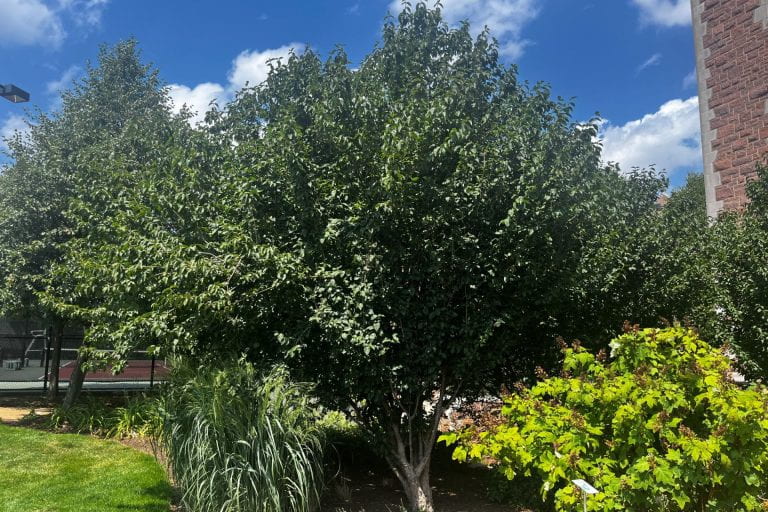
Cornelian Cherry Dogwood
Arbor Walk #122
A beautiful non-native from Europe and Asia, this tree shows off its gorgeous star-shaped, yellow flowers in early spring before its leaves emerge.
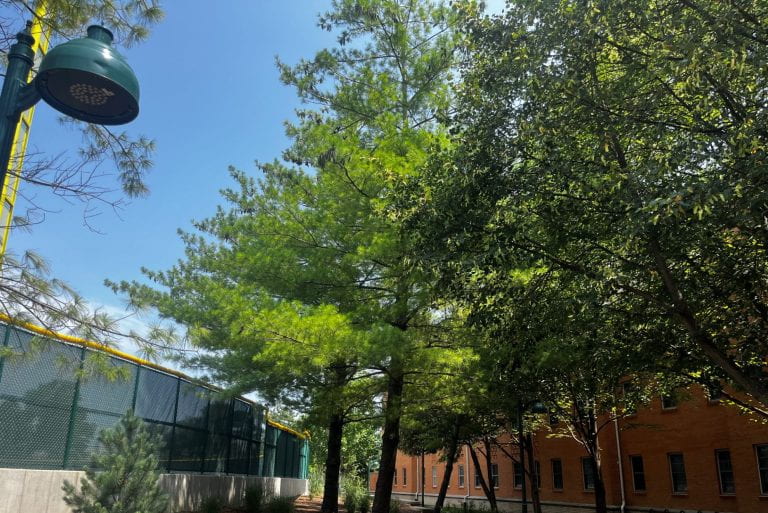
Eastern White Pine
Arbor Walk #134
The Eastern White Pine (Pinus strobus) is considered to be the tallest tree east of the Rocky Mountains, and one of the most historically important. This tree, which ranges from 80' up to 180+' at its record tallest, was the premier tree for timber in North America in the 18th and 19th century. Due to its massive demand in furniture, construction, and farming, stands of this pine were dramatically wiped out by 1900.
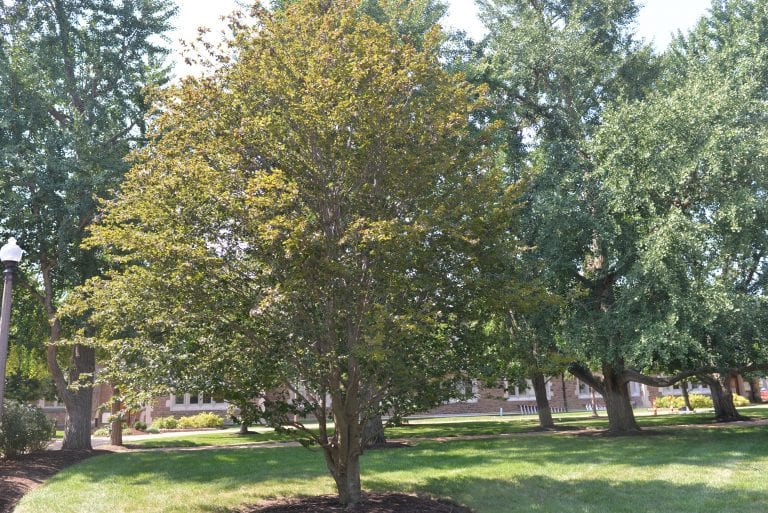
European Beech
Arbor walk #14, Treekeeper ID #1691
This beautiful non-native tree is adaptable to the Midwest. It has golden bronze leaves in the fall and its bark has a gray, elephant-hide appearance.
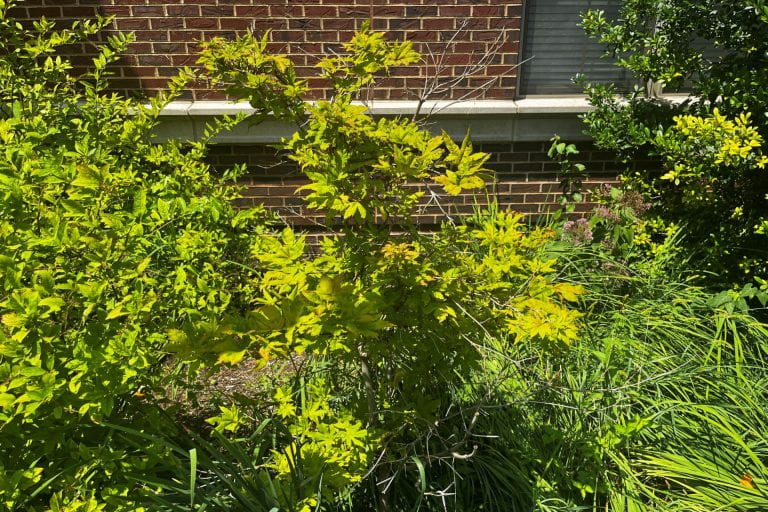
Full Moon Maple
Arbor Walk #135
The Full Moon Maple is a small, dense tree with unique large, showy leaves that is native to Japan. These leaves create beautiful fall foliage and are mainly sought after for landscaping.
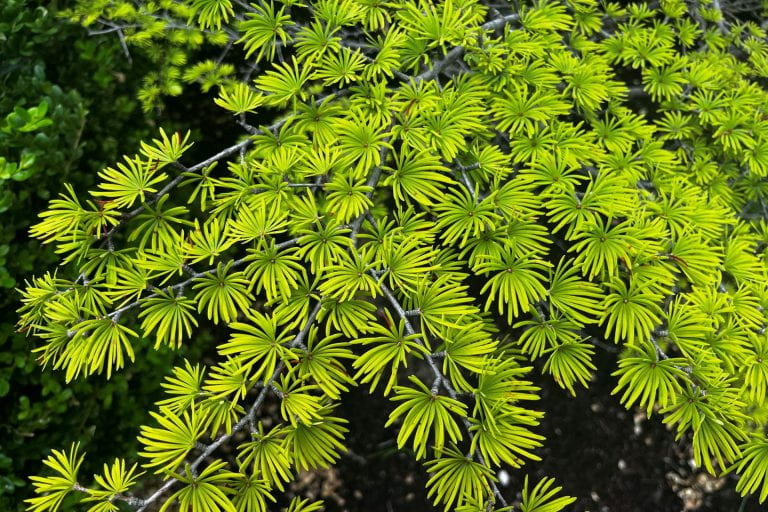
Golden Larch
Arbor Walk #116
One of the more unique members of the Pine family (Pinaceae), this tree has a circular spray of soft, thick needles and mature cones that resemble upside down succulents or artichokes. Originating from eastern China, this species thrives in the warm, wet environments of the American Midwest and Southeast.
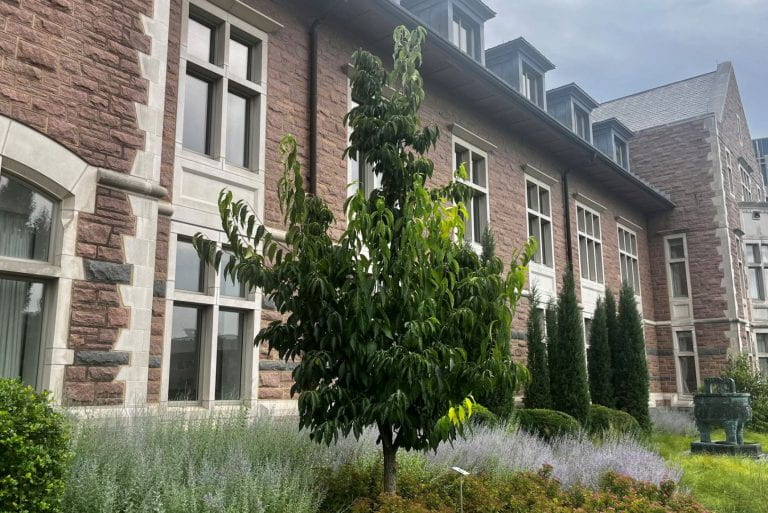
Hardy Rubbertree
Arbor Walk #120
This tree gets its name from the gummy sap contained in the tree's leaves, branches, and bark, which does not pour out like a milkweed but rather pulls apart with sticky strings like half-dried glue. Native to China, this tree has been traditionally used to treat high blood pressure, liver, and kidney issues.
Hybrid Willow
Arbor Walk #117
This willow is a hybrid between the Bay Willow (Salix pentandra) and the Eastern Crack-willow (Salix euxina). It was developed at North Dakota State University and is known for its rounded shape, vigorous foliage, and its namesake reflective leaves that lend the 'Silver Lake' epithet.
Japanese Cornel Dogwood
Arbor Walk #113
The Japanese Cornel Dogwood boasts elegantly characteristic dogwood leaves, edible fruits (yet quite astringent when raw), and traditional medicinal use in East Asia for liver and kidney illnesses.
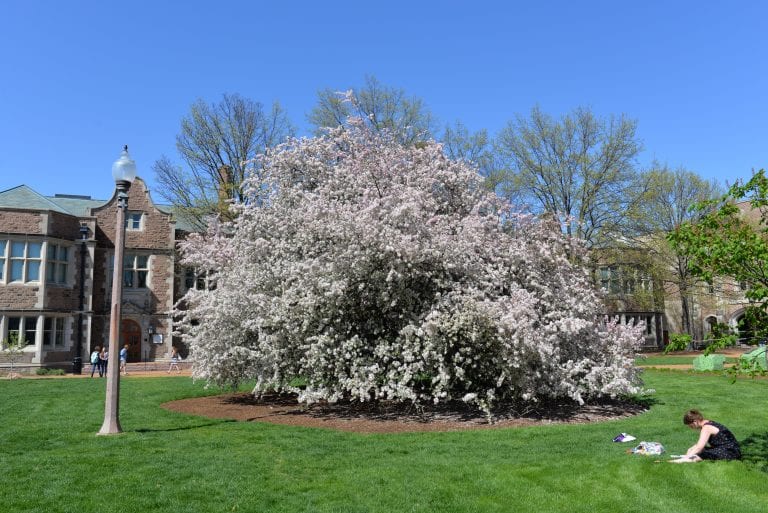
Japanese Flowering Crabapple
Arbor walk #11, Treekeeper ID #1607
This small flowering tree belongs to a family of trees that are popular for their profuse spring flowers. This tree also produces its namesake crabapples, which are edible except for the seed, yet very small. Arbor Walk #11 has a dome-like shape and students often study underneath the tree's canopy in hotter months.
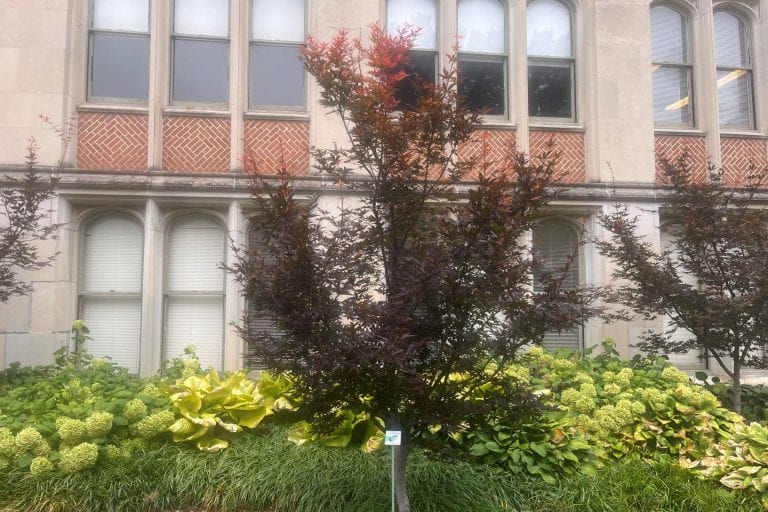
Japanese Maple
Arbor Walk #136
The Japanese Maple has been cultivated in and around its native range for hundreds of years, and since the 1800s, has been symbolic of Japanese Gardens to Western observers.
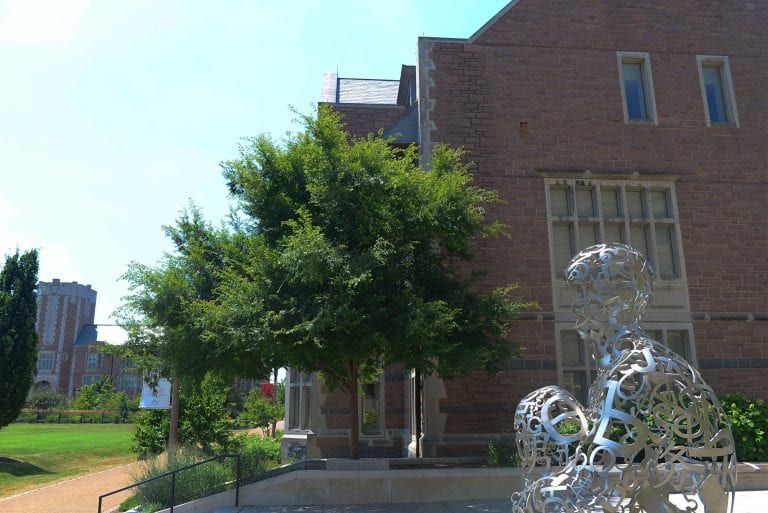
Lacebark Elm
Arbor walk #5, Treekeeper ID #3495
The Lacebark Elm is a large elm native to China that is known for its intricate bark and durable wood. It has strong resistance to the deadly Dutch Elm Disease, making it an ideal planting or hybridization target.
Loblolly Pine
Arbor Walk #126
The Loblolly Pine is an iconic tree in the Southeastern United States, dominating the southern pine forests and being grown for lumber in plantations in the region. It is tall, skinny in shape, and a vigorous grower.
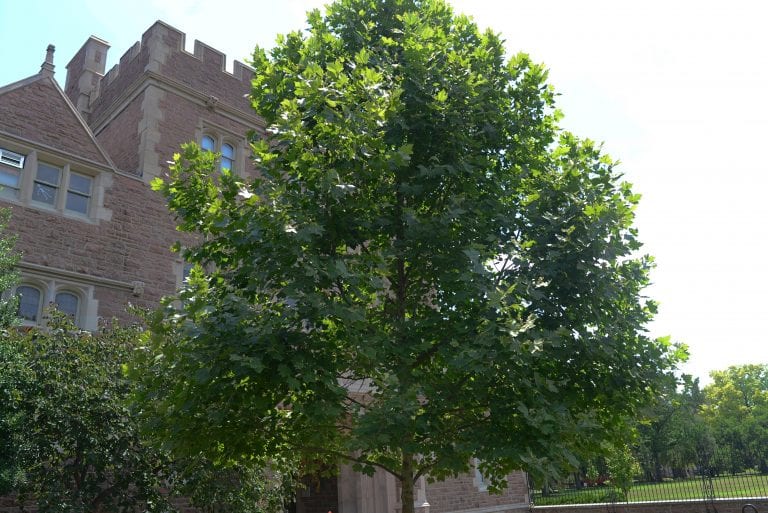
London Planetree
Arbor walk #6, Treekeeper ID #2200
The London Planetree is a hybrid of the Oriental Plane (Platanus orientalis) and American Sycamore (Platanus occidentalis), combining improved disease resistance with cold tolerance. The London Planetree is also extremely tolerant of pollution, and is even found to be an effective removal agent of air pollution particles.
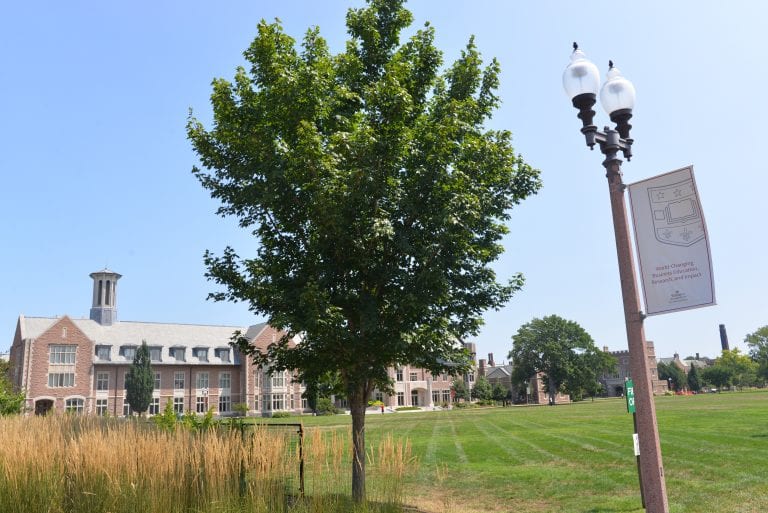
Miyabe Maple
Arbor walk #2, TreeKeeper ID #3153
This tree is native to Japan, although it has become endangered within its own native range. This cultivar was introduced at the Morton Arboretum in Illinois.
Nannyberry Viburnum
Arbor Walk #133
The Nannyberry Viburnum features edible berries that persist in winter and abundant white flowers. It is a tall shrub or small tree, reaching about 15' in height as a multi-stemmed shrub, or pruned into one trunk up to 30'.
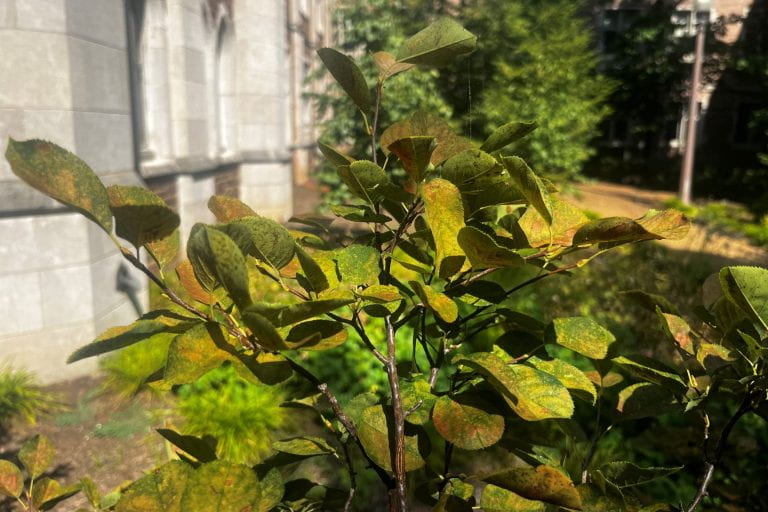
Nantucket Serviceberry
Arbor Walk #131
This shrub is quite rare, endemic to Maine, Massachusetts, and other isolated pockets along the East Coast from Nova Scotia to South Carolina. Its edible berries and pollen-tipped white flowers are notable characteristics of this plant, which inhabits sandy areas mainly along the coastline.
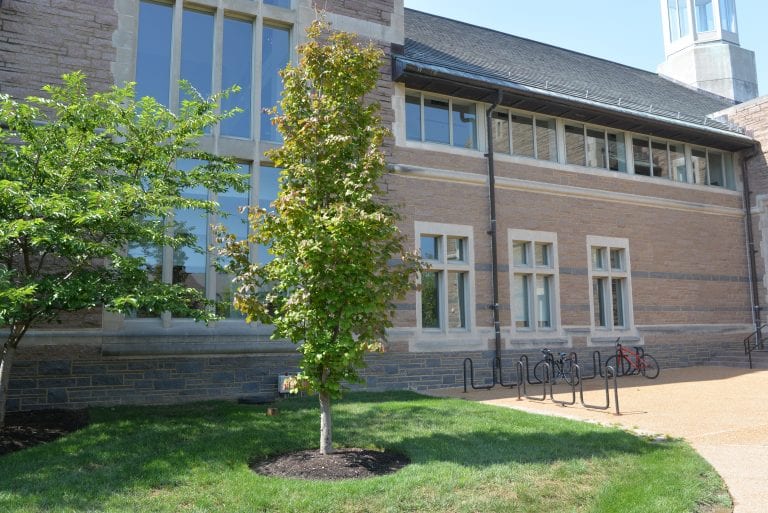
Persian Parrotia
Arbor Walk #1, Treekeeper ID #2642
Also known as the Persian ironwood, the Persian Parrotia is known for its exfoliating bark which is particularly noticeable in the winter. When young, its leaves are reddish purple, and as it matures they will become dark green in the summer and yellow, orange, and red in the fall.
Southern Catalpa
Arbor Walk #115
The Southern Catalpa is a smaller relative of the Northern Catalpa, keeping the large cordate leaves and long seed capsules, but with more vivid flowers and unpleasant-smelling leaves.
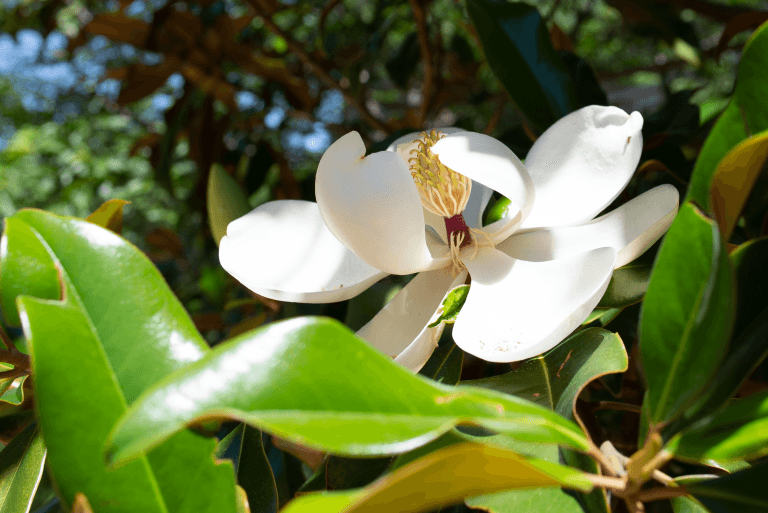
Southern Magnolia
Arbor Walk #3, TreeKeeper #2164
Turkish Filbert
Arbor Walk #127
While not produced commercially, the Turkish Filbert produces edible nuts that can be eaten after roasting, and provides a dependable urban-tolerant shade tree.
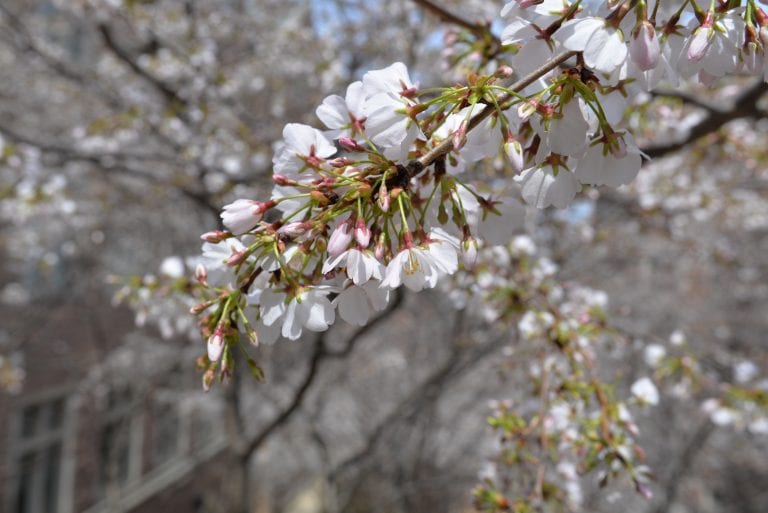
Yoshino Cherry
Arbor walk #4, Treekeeper ID #4302
The Yoshino Cherry is a beautiful tree with slightly fragrant, pinkish white flowers that appear in early spring. There are numerous Yoshino Cherry Trees that line the stairs by the Olin Law School that form an allée.